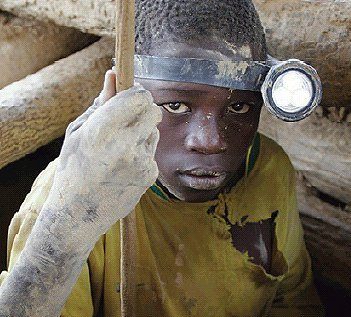
Child Labour in Africa
This is Hamisi, an 11 year who has a career as a miner.
Hamisi dropped out of his third year of primary school and left his home village after his father was unable to pay for his uniform and school fees. Although Hamisi’s parents have their own half-acre coffee farm, their income fell sharply because of the decline in the market price for coffee throughout the world. Hamisi works up to 18 hours and earns between 60 cents to $ 1.2 a day.
The health of the children like Hamisi is very poor, as they breathe in the harmful graphite dust found in the mines and have poor nutrition, surviving on 1 meal a day.
Child slavery in big industries such as agriculture and manufacturing is an ongoing issue, and they are slowly being resolved by governments and organizations fighting child labor. Stories such as the ones mentioned above are common scenarios in developing countries where there are large sections of the population who are still deep in poverty.

Facts:
- + 8.4 M in the last 4 years alone. According to a report by the International Labour Organization (ILO) and UNICEF, the number of children in labour has increased to 160 million worldwide.
- 72.1 M are estimated to be in child labour in Africa. 9% of African children are in hazardous work – the highest of all the world’s regions representing 31.5 million.
- 1 in 5 children in Africa are employed against their will in farms and mines.
Recommendations:
- Increase the number of years for compulsory education.
- Create more job opportunities with higher salaries for parents.
- Set a minimum age at which people can legally be employed.

